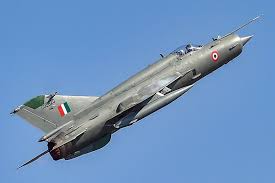India’s iconic MiG-21 fighter jets set to bid adieu in September after 6 decades of service

India’s legendary MiG-21 fighter jets will retire in September 2025. These aircraft have served the Indian Air Force (IAF) for more than 60 years. The jets first flew in India’s skies in 1963. On September 19, 2025, the IAF will hold a farewell ceremony at the Chandigarh airbase. This event will mark the end of an era. It also signals the IAF’s focus on modernizing its fleet for future challenges.
The Beginning of a New Chapter
The MiG-21 is a supersonic jet fighter designed in the Soviet Union. India inducted this jet amid Cold War tensions. The aircraft’s design was advanced for its time. It was lightweight and could reach supersonic speeds. These qualities made it a core part of India’s air defense. India acquired the MiG-21 through agreements with the Soviet Union. Over the years, India produced the jet under license and upgraded it multiple times.
A Role in Key Conflicts
The MiG-21 fought in several important wars. It played a vital role in the Indo-Pak wars of 1965 and 1971. The jet provided air superiority and close air support, helping India gain the upper hand. During the 1971 war, MiG-21 pilots flew many successful missions. They targeted enemy airfields and infrastructure. The jet also took part in the Kargil conflict of 1999 and Operation Sindoor. Its performance proved its value time and again.
Facing Safety Challenges
Despite its strengths, the MiG-21 earned the nickname “Flying Coffin.” This unfortunate label came from a high number of accidents. The jet’s old design and aging parts led to many safety issues. The IAF tried to improve the jets with upgrades in avionics and weapons. Still, the aircraft became less reliable as it aged. It became clear that India needed to replace the MiG-21 with a modern fighter.
Moving Toward Indigenous Technology: The Tejas Mk1A
India plans to replace the MiG-21 with the indigenous Light Combat Aircraft (LCA) Tejas Mk1A. HAL and the Aeronautical Development Agency developed this modern fighter. The Tejas Mk1A features advanced avionics, better weapons, and greater agility. It uses state-of-the-art radar and electronic warfare systems. The aircraft can handle multiple roles, including air superiority and ground attack. The transition to Tejas marks a big step toward India’s self-reliance in defense technology.
Squadrons currently flying the MiG-21, such as those at Nal Air Force Station and the 23 Squadron “Panthers” in Chandigarh, will switch to Tejas Mk1A jets. This change reflects the IAF’s commitment to keeping its fleet modern and effective.
The Farewell Ceremony: Honoring a Legacy
The official retirement ceremony on September 19, 2025, will take place at Chandigarh. The 23 Squadron Panthers will conduct the event. This ceremony will honor the MiG-21’s long service and pay tribute to the pilots who flew it. The event will feature flypasts and demonstrations. It will remind everyone of the aircraft’s vital role in India’s defense.
The retirement also shows the IAF’s shift toward modern warfare. It highlights the need for advanced aircraft capable of facing new threats.
A Legacy of Courage and Service
The MiG-21 represents resilience and bravery. Over six decades, it defended Indian skies during tense times. Many skilled pilots flew this jet with great courage. The aircraft’s legacy includes countless daring missions and dogfights.
Although the MiG-21 is retiring, its stories will live on. Museums, memorials, and veterans will keep its memory alive for future generations. The “Flying Coffin” will remain a symbol of India’s aviation history.
Looking Ahead
As the MiG-21 retires, India looks to a future with modern fighters like Tejas, Rafale, and other advanced jets. The IAF also plans to focus on stealth technology, drones, and network-centric warfare.
The MiG-21’s retirement closes a chapter but opens new possibilities. It symbolizes India’s drive to build a stronger, self-reliant air force ready for the challenges ahead.






